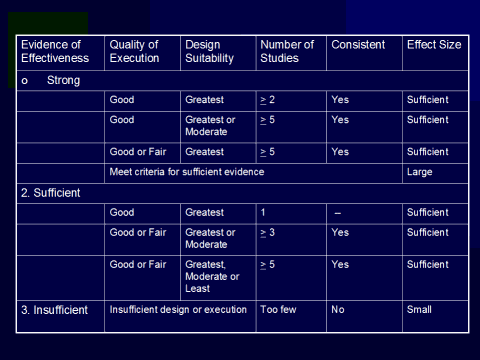| front |1 |2 |3 |4 |5 |6 |7 |8 |9 |10 |11 |12 |13 |14 |15 |16 |17 |18 |19 |20 |21 |22 |23 |24 |25 |26 |27 |review |
 |
I won’t review the
algorithm for drawing conclusions in detail (it is presented in the AJPM
supplement I discussed earlier) but this is it.
The important point about this algorithm is that there are many different pathways to drawing conclusions about a body of evidence. For example, sufficient evidence can reflect either a relatively small number of very well designed and executed studies or a larger number of studies with lesser suitability of design or more limited quality of execution. Recommendations of the Task Force usually emerge directly from the strength of the evidence. For example, a strong body of evidence of effectiveness leads to a strong recommendation for the intervention. Likewise, evidence that the intervention is ineffective would lead to a recommendation against using that intervention. There are exceptions to these rules which I will discuss momentarily. To date, more than 70 recommendations have been made in diverse public health areas, and the resulting conclusions seem to have generally had good face validity. |